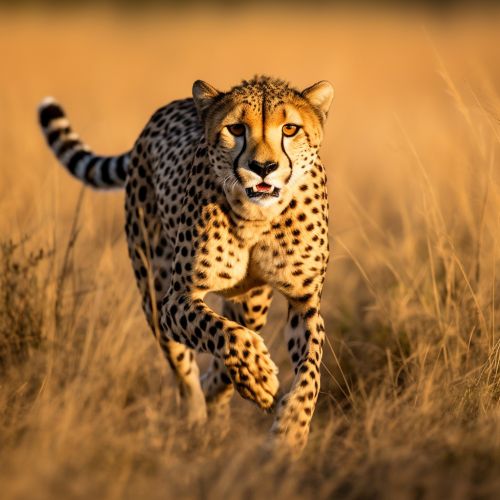The Science of Animal Locomotion and Biomechanics
Introduction
The science of animal locomotion and biomechanics is a multidisciplinary field that studies the movement of animals in their natural environment. This discipline combines principles from physics, engineering, and biology to understand how animals move and how their movement can be optimized.


Animal Locomotion
Animal locomotion is the study of how animals move from one place to another. This can include a variety of movements, such as walking, running, jumping, swimming, and flying. The study of animal locomotion involves understanding the mechanics of these movements, as well as the physiological and neurological processes that control them.
Types of Animal Locomotion
There are several types of animal locomotion, each with its own unique biomechanical principles. These include terrestrial locomotion, aerial locomotion, and aquatic locomotion.
Terrestrial Locomotion
Terrestrial locomotion refers to movement on land. This can include walking, running, jumping, and crawling. The biomechanics of terrestrial locomotion are influenced by factors such as body size, limb structure, and the type of terrain.


Aerial Locomotion
Aerial locomotion refers to movement in the air. This is most commonly seen in birds, but can also be observed in insects, bats, and some species of fish and mammals. The biomechanics of aerial locomotion are influenced by factors such as wing shape, body mass, and air density.


Aquatic Locomotion
Aquatic locomotion refers to movement in water. This can include swimming, diving, and floating. The biomechanics of aquatic locomotion are influenced by factors such as body shape, fin structure, and water density.


Biomechanics
Biomechanics is the study of the structure and function of biological systems as modeled by mechanics. In the context of animal locomotion, biomechanics involves understanding the forces that act on an animal's body during movement, and how the animal's structure and physiology enable it to move efficiently.
Principles of Biomechanics
There are several key principles of biomechanics that are relevant to the study of animal locomotion. These include the principles of force, motion, and energy.
Force
Force is a fundamental concept in biomechanics. In the context of animal locomotion, forces can be generated internally (e.g., by muscle contraction) or externally (e.g., by gravity or friction). Understanding how animals generate and manage forces is crucial to understanding their locomotion.


Motion
Motion is another key concept in biomechanics. In the context of animal locomotion, motion refers to the movement of an animal's body or body parts. Understanding the kinematics (the geometry of motion) and kinetics (the forces causing motion) of animal movement is a major focus of biomechanical research.


Energy
Energy is a crucial concept in biomechanics. In the context of animal locomotion, energy refers to the capacity to do work. Understanding how animals use and conserve energy during movement is a key aspect of biomechanical research.


Applications of Animal Locomotion and Biomechanics
The study of animal locomotion and biomechanics has a wide range of applications. These include the design of robots and prosthetic limbs, the development of animal-inspired vehicles, and the improvement of animal welfare.


